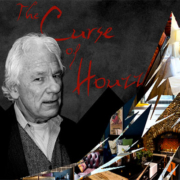The Seasoning of an Architect

Rich Keilman, Architect, 17 years Nick Cecere, Architect, 5 months
Like most prospective architects, Rich and Nick’s careers began with the pursuit of an educational degree. Between the two of them, there are two Bachelor of Architecture degrees, a Bachelor of Environmental Design, and a Master of Architecture. With all that schooling, you’d think they would be architects right out of the gate.
Not true. No one leaves school as a licensed architect. It just doesn’t work that way.
In order to become a licensed architect, and use the protected term “architect” on your business card, or even introduce yourself to others as an architect, you need a minimum three years of experience under a licensed architect. Anyone who calls himself an architect right out of school is a fibber. In Texas, an unlicensed practitioner was fined $200,000 for having the word architect in his business name.
Once you have all your field experience hours logged and approved by NCARB, the governing authority, you can begin taking a series of seven exams on every aspect of architecture. Each exam division takes 4-6 hours to complete. To stay sane, people usually space out the exams over months or years, wildly studying in between. After you pass them all, you can apply to become a licensed architect. Nick was out of school for 9 years before starting the exams, but feels the additional work experience was invaluable to his professional growth and ultimately made him that much more prepared to sit for exams.
Rich Keilman passed his exams 17 years ago. Nick Cecere passed five months ago.
Nick may be our newest architect, but he’s no greenhorn.
When Nick got the email notification that he passed his final exam, he was overjoyed. Tears were shed. An overwhelming sense of relief and accomplishment. Shots of 1942 Don Julio tequila were in order. This was the culmination of his longest term goal ever…an affirmation and attestation of his life plan. Celebration ensued and an epic vacation was planned as a fitting reward.
Architectural registration may not be required to work in the field, but passing up the achievement was never an option Nick gave himself. The license gives you credibility with clients, raises the qualifications of the Studio, and gives you the ability to stamp architectural drawings. But ultimately, the only way to increase your skills in architecture is to keep working and learning from every job and from the people around you.
For the past three years Nick has been our solid go-to guy for architectural production work at Barrett Studio and we look forward to the coming years ahead. Here’s one custom home he’s been working on recently:

Now meet Rich, our 17-year seasoned architect.
A few months ago we hired Rich Keilman who came from his own private practice in Carbondale, CO.
Rich tells a tale of the first huge job he was entrusted with when he was only seven years out of school:
The firm he worked for in Cleveland, OH had won the job of executive architect for the Akron Art Museum. After the first meeting with the client where Rich was introduced as the Project Manager, the client pulled a Principal of the firm aside, privately whispering “THIS guy is going to lead the project???”
That was the beginning of a four-year endeavor that Rich said, “posed some of the greatest professional challenges of my career.” It’s an impressive piece of architecture designed by the internationally acclaimed firm Coop Himmelblau of Vienna, Austria. No youngling should have had his hands around it, but Rich stepped up and stretched his abilities to coordinate a global design team, implement highly customized building systems and materials, and break into BIM 3D modeling (now standard in the field.)

So what did this architect learn in his “seasoning?”
Lesson #1: Understanding the client is paramount.
A beginner approach: Start designing immediately!
A seasoned approach: First and foremost, find out where the client is coming from. Clients often have difficulty verbalizing what they want, or why they want it. What do they understand about the design process, if anything? Have they ever seen a design rendering and know how to interpret it? Have they built a house before, or interacted with architects and builders? This kind of inquiry establishes common ground at the beginning of the project and can make the difference between the project being a drag (or worse, a loss), or your best work ever.
Lesson #2: Know when to stop designing.
A beginner approach: Draw every detail and design EVERYTHING.
A seasoned approach: Knowing when to stop designing, and when to stop documenting, is a long, slow learning process. The reality is, one could design and draw much more than is necessary to complete a successful and beautiful project. If you have a strong team of consultants and a savvy builder, you don’t need to overly document a project. Let go a little. Lean on the trust you have developed with the client, the consultants, and the contractor. Doing so will bring out the contributing strengths of each, realizing the best results for the client.
Lesson #3: Find your true confidence.
A beginner approach: Overly confident.
A seasoned approach: Truly confident. In addition to designing and documenting, an architect is often the leader of a diverse project team. Effective leadership of a team and a client requires confidence from the architect. The cliché ‘fake it ‘til you make it’ creates a sense of confidence, but one that is usually false and transparent. True confidence is authentic and is born over time through focused attention and clear communication. It is about knowing and leveraging your strengths while also understanding when to bring other resources to bear on a project.
Jennifer Bridges, Director of ProjectManager.com says: “From my perspective, someone who is seasoned has been through all forms of project trials and tribulation, survived to see another day, and carries this knowledge and insight from their experiences forward with them. They see the end result of something many times before it begins and are willing to share, coach and mentor those around them.”
We couldn’t think of a more apt description of Rich, and that’s why we invited him to be part of the Barrett Studio family. After his move to Boulder and joining the Studio, he said, “I see potential all over the Boulder area. The people here are my kind of people.”
















Trackbacks & Pingbacks
[…] the ever-evolving realm of architectural editing, the wisdom distilled from seasoned architects and designers serves as a beacon, illuminating the path to proficiency in Photoshop. These industry […]
Leave a Reply
Want to join the discussion?Feel free to contribute!